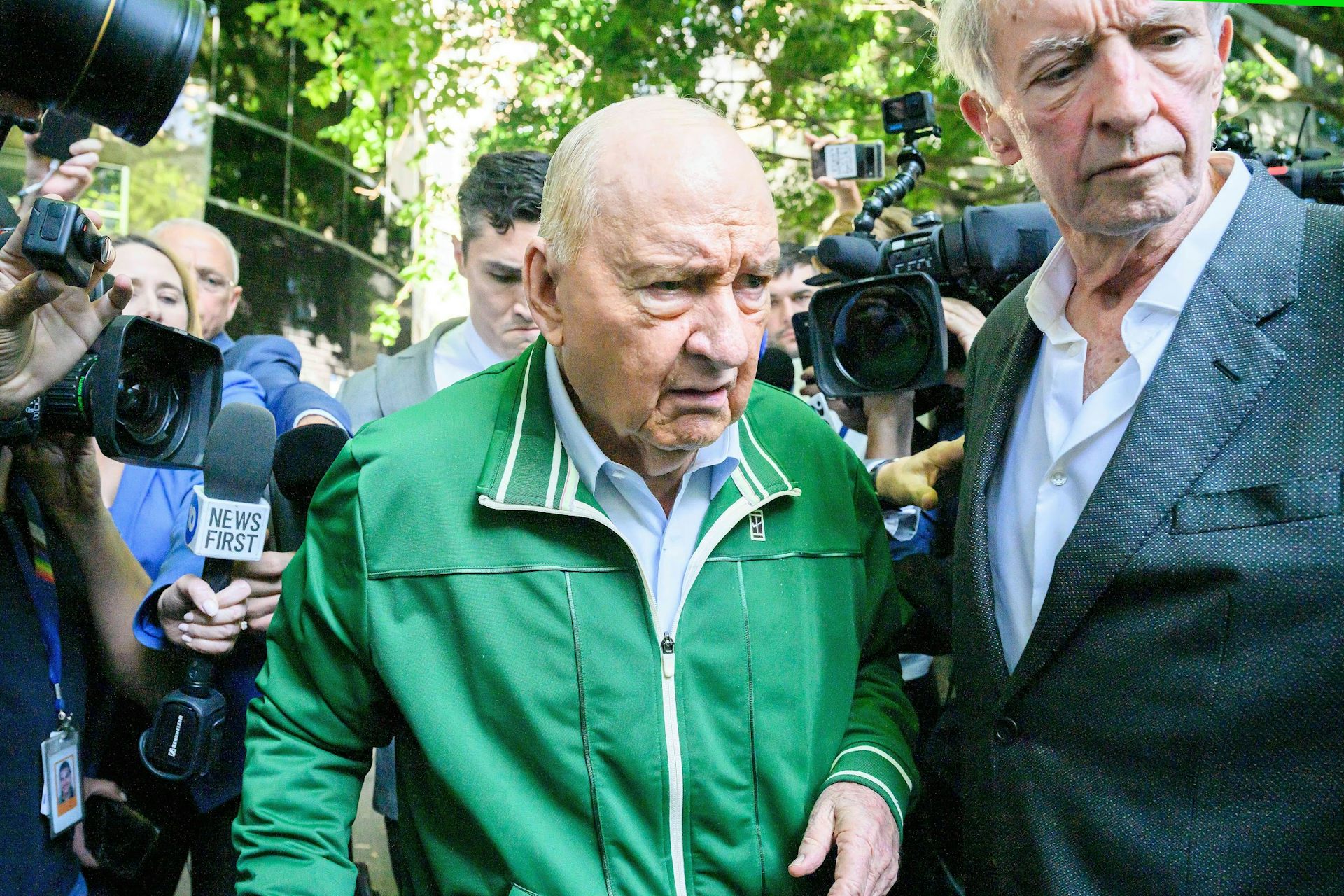
For decades it seemed Alan Jones was unassailable.
A finding against him of professional misconduct by the Australian Broadcasting Authority (2000); a finding that he incited hatred, serious contempt and severe ridicule of Lebanese Muslims (2009); propositions of violence against two women prime ministers (2011 and 2019); verdicts against him and his employer amounting to millions of dollars in defamation actions (most notably one for $3.75 million in 2018): none of these ended his career.
Quite the reverse. Only weeks after the Australian Broadcasting Authority found in its “cash for comments” inquiry that Jones and others had misled their listeners by presenting paid endorsements as editorial opinion, he was hosting an event for then prime minister John Howard.
Howard was to become a fixture on the Jones program throughout the 11 years of his prime ministership.
The day after the Australian Communications and Media Authority found Jones was likely to have encouraged violence and vilification of Australians of Lebanese and Middle Eastern background, Howard described him as “an outstanding broadcaster”. “I don’t think he’s a person who encourages prejudice in the Australian community, not for one moment, but he is a person who articulates what a lot of people think.”
By 2001, Jones had become a kind of on-air policy-maker for the New South Wales government. In November that year, he dined with the then Labor premier, Bob Carr. They discussed a range of government policies, particularly policing. At that time, Jones was a relentless critic of the NSW police.
The following week, Carr dispatched his police minister-designate, Michael Costa, to Jones’s home to discuss policing policy.
In 2011 he said Julia Gillard, then Australia’s prime minister, should be taken out to sea and dumped in a chaff bag. In August 2019 he said Scott Morrison, who was then Australia’s prime minister, should “shove a sock” down the throat of his New Zealand counterpart Jacinda Ardern.
He was an outspoken climate-change denier, and these grotesqueries were part of his campaign against political recognition of this reality.
Jones’s power, which made him so apparently untouchable, came from his weaponising of the microphone for conservative political ends in ways that resonated with his vast and rusted-on audience of largely working-class older people across Sydney’s sprawling western suburbs.
These suburbs contain many marginal state and federal electorates where the fates of governments can be decided. Their populations provide fertile ground for seeding by right-wing radio shock jocks, of whom Jones and his rival John Laws were pre-eminent examples.
In Australia, this is a peculiarly Sydney phenomenon. It is not seen to the same degree in any other capital city, even though they too have large areas of socioeconomic disadvantage like western Sydney.
Why that should be so is a complex question, but there are aspects of Sydney life that mark it out as different. It is really two cities. One is the largely prosperous and scenically dazzling east and north. The other, much larger, consists of dreary tracts of increasingly crowded housing stretching for many kilometres to the west and southwest.
In Sydney argot, the inhabitants of these respective worlds are called “silvertails” and “fibros”, the latter referring to the cladding of the homes that proliferated in western Sydney between and after the two world wars.
This two-cities effect makes the gap between the “haves” and the “have-nots” highly visible in a way that has no parallel in other Australian capitals. It engenders deep-seated grievance and cynicism, which the likes of Jones, who lives in a multimillion-dollar apartment on Circular Quay, have relentlessly exploited.
Jones coined the term “Struggle Street” to encapsulate the hardships of his listeners’ lives.
To these powerless people, Jones and Laws gave a voice, and as their audiences grew, prime ministers and premiers courted and feared them.
In the end, Jones’s impregnability was breached by not the power elite turning on one of their own, but by the journalism of a redoubtably tenacious Sydney Morning Herald investigative reporter, Kate McClymont.
In December 2023, she claimed Jones had used his position of power, first as a teacher and later as the country’s top-rating radio broadcaster, to allegedly prey on a number of young men.
In response to McClymont’s work, the NSW police set up Strike Force Bonnefin, run by the State Crime Command’s Child Abuse Squad, to conduct an investigation into Jones.
On November 18 2024, Jones was arrested at his Circular Quay home and charged initially with 24 sexual offences against eight males. The following day, two additional charges were laid involving a ninth male.
Through his lawyers, Jones has denied the charges and was bailed to appear in Sydney’s Downing Centre Local Court on December 18. He was ordered to surrender his passport and not to contact or harass the alleged victims.
The charges relate to offences alleged to have been committed by Jones between 2001 and 2019, the youngest alleged victim being 17 at the time.
Those dates coincide almost exactly with Jones’s most influential years, from 2002 to 2020.
McClymont has spoken about the reluctance of some of her interviewees to speak, for fear of what Jones might do:
People were too afraid to take on Alan Jones. Once a couple of people came forward, and some people were happy to be publicly named, that gave confidence for other people to come forward.

